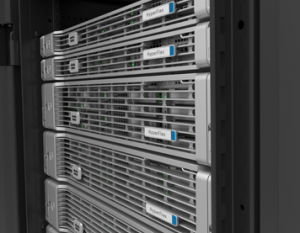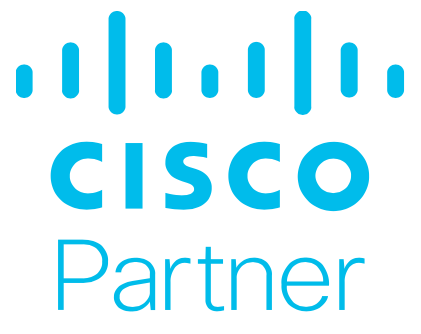Hyper-converged infrastructure or HCI refers to a type of virtual computing platform. The platform is mainly used to converge virtualization, computing, and storage into a single software-based architecture. They are commonly used in data centers. It can also be defined as an infrastructure where software is the center architecture and has various functions, including networking, virtualization resources, storage, compute and other technologies. A hyper-converged platform provides a system where intergrade technologies can be managed as one single platform through a common tool. Common uses of the hyper-converged system are in virtualized workloads. Hyper-converged concept was derived from the converged infrastructure. In converged infrastructure system approach, the vendor will provide a pre-configured bundle of hardware and software in one single platform. The aim of this is to remove any compatibility issues and also simplify the management process. If there is any need for the converged infrastructure to be sued independently, they can be separated. However, technologies within the hyper-converged platform cannot be broken down into separate components.
Cisco Hyper-Converged Infrastructure
The hyper-converged platform is provided by Cisco HyperFlex. The system combines a software-defined networking and computing power of Cisco. The hyper-converged system by Cisco is designed so that it brings increased effectiveness and adaptability to more workload in data centers. There are various flexible configurations offered by the hyper-converged infrastructure. One can be able to choose from a hybrid or all-flash system based; it will depend on one’s business needs. Some of the things that Cisco’s hyper-converged infrastructure can help achieve include improve operational efficiency, rapidly deploy VMware view, accelerate VDI adoption and speed up SAP design. Some of the features of the hyper-convergence infrastructure by Cisco includes:
Complete hyper-convergence – The platform HyperFlex can bring together networking and computing technologies in the next-generation data platform.
Flexible Scaling – Enables scale nodes, capacity independently and computing in Hyperflex clusters.
Flash-optimized system – It enable the gaining of high performance and storage longevity.
Continuous data optimization – It increases capacity while optimizing and maintaining performance data compression and duplication.
Cisco has been able to transform numerous IT operation with complete hype-convergence.
Server Consolidation with Hyper-Convergence
For enterprises out there that are looking to consolidate a part or all their data center can adopt the hyper-converged infrastructure. Instead of relying on traditional setups of servers, networks and storage arrays, data center administrators can decide to go for the automation driven by hyper-converged solutions. Hyper-convergence provides a single platform that offers storage, networking, computing and virtualization, with all being managed by automated software. There are numerous reasons as to why numerous organizations are choosing hyper-converged infrastructure in consolidating their servers and other data center components. Some of the reason as to why many enterprises are switching to the hyper-converged platform include:
Scale out platform – Hyper-convergence is a scale-out infrastructure. Virtual desktop infrastructure or VDI is the traditional scale-out workload. However, VDI is usually too large. The scale-out platform for hyper-converged platform delivers ideal performance and application to help the enterprise grow in the right way.
Growing workloads – Hyper-convergence allows data centers to expand their capacity and performance through adding of nodes. The platform proves to be the best to adopt when it comes to growing workloads and demand for growth.
Simplification – The unique platform offers simplified management to server managers. Most of the platform offers policy-based virtualization management. Thus it helps in reducing the effort needed to manage a collection of VMs.
Support for remote or branched offices – Enterprises with branches or remote offices will benefit a lot from the virtualization platform offered by hyper-converged architecture. The platform aids in keeping the operational cost under control and simplify management.
These are some of the important reason as to why many organizations are switching to hyper-converged architecture.
Hyper-Convergence Application
One of the beneficial things about hyper-convergence is that it does not need one to replace their existence infrastructure so as to benefit from its value. There are certain ways through which hyper-converged platforms are used, some of the use cases include:
Consolidating servers and data centers – Leading hyper-convergence vendors such as Cisco offer the necessary products and services that can integrate with the current infrastructure within an organization.
Modernizing technology smoothly – The use of hyper-convergence architecture is a non-disruptive implementation. The platform is part of the overall environment. This means one can phase in the new platform while at the same time phasing out the old one.
Deploying VDI – Hyper-converged architecture allows for the deploying of VDI needs and projects. Since resource islands are set up in large parts due to virtual desktop infrastructure, one will not face nay resource challenges within hyper-convergence platform. The deploying process to the hyper-converged environment will be quite simple.
Cloud solutions – HCI or hyper-converged infrastructure has been designed with the main aim of producing infrastructure services that will be used for cloud computing. The public cloud is one proof that has shown HCI can support workload and is stable enough to be used.
Advantages of Hyper-converged
There are numerous benefits of hyper-convergence, which allows enterprises to have an easy way to manage but scalable appliance infrastructure. Some of the common benefits of hyper-convergence include the following:
Date Efficiency – The unique platform has provided an infrastructure that assists in reducing various aspects such as bandwidth and storage.
Mobility – The hyper-converged infrastructure aids enterprises to be able to handle more mobility in workload and applications.
Scalability – The platform makes it easier to scale in and scale out resources.
Data protection – The hyper-convergence platform gives firms an extra feature when it comes to easily restoring data.
Cost Efficiency – The new platform brings a new economic model to any IT department in any organization.
HCI delivers compute, virtualization, network, storage, data protection and management in a much easier and scalable application. This means that any organization will be able to manage a complex infrastructure easily. Hyper-convergence has proved to be a pivotal infrastructure that can be used by any organization including small scale enterprises. It is quite cost effective and plays a vital role in the managing the firm’s infrastructure.


